In 2014, we took some time to ask farmers a few questions about the transition to robot operations and how it worked in each situation. Take a look back at this roundtable on robots from a 2014 edition of Cowsmopolitan.
The installation of robotic milkers has been consistently on the rise. After the first few years of installations, multiple competitors striving for the best machine, and rave reviews from farmers who work with them, it doesn’t look like this market will be slowing down any time soon.
Choosing farms in different areas, with different sized herds and a few of every brand, we’re hoping to see what it is about this technological advance that has so many people talking.
MISTYGLEN – DeLaval

Siblings Tom and Suzanne Pettit own and operate Mistyglen Holsteins, a dairy located in South-Western Ontario. They currently milk 40-45 cows in a DeLaval VMS system, installed in May of 2012. Current BCA’s read 263-281-262, producing an average of 41kg/day.
LAVENDER – Lely
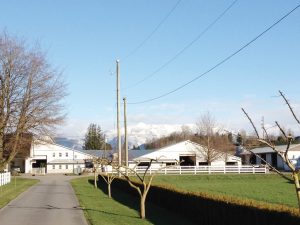
Lavender Farms, located in Abbotsford, BC, is owned and operated by D.R. Vaandrager and family. The farm currently milks 110 cows in two Lely A3 robots, installed in 2008. Average production is 40kg per day. Current farm breakdown reads 8 EX, 74 VG, and 37 GP animals.
BELLMAN – GEA

Bellmann Dairy Farm is located in Cuba City, WI. The 750 acre farm is owned by Greg and Cheri Bellman, with siblings Kurt and Kristi Bellmann working on farm as well. Currently the dairy milks 90 grade Holsteins in a GEA MIone, a 3 box system they installed in May of 2014. Average herd production is 58.8lbs per day at 2.9 visits.
POL BUTTE – Boumatic

Pol Butte Dairy is owned and operated by Gys and Corien Vandenpol, and children. Located in Coaldale, Alberta, the herd milks 95 Holsteins in a bedding pack barn with 2 Boumatic Robots. Current herd breakdown is 98% GP or better, with milk averaging at 41kg/day at 3.8%F and 3.1%P with 3.5milkings/cow/day.
WRICO – DeLaval
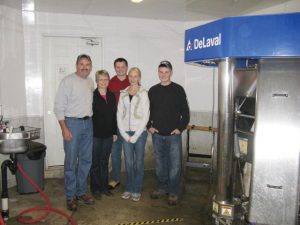
Robert and Roberta Wright and family own and operate Wrico Holsteins, located in Midhurst, ON. The 800 acre farm milks 85 cows in 2 DeLaval VMS robots, with goals to reach 150 milking cows. Wrico is a 2x Master Breeder Herd.

BARGREEN – Lely
David Hastings is the herd manager at Bargreen Holsteins, based in Cheshire, England. Their herd size is 400 cows with an average yield of just over 10,000kg at 4% fat, 3.21% protein. Bargreen had its first 3 Lely A4 robots installed in August of 2013, followed by 3 more in May of 2014.
ROOSBURG – GEA

Roosburg Farms is a family-owned and operated farm in Athens, ON, milking 85 cows with a GEA MIone automatic milking system. John and Debbie Verburg, along with sons and daughters-in-law Cole & Anjela and Ian & Abbey manage the 500 acre farm relying on each other and their faith in God to keep them going.
GIARD – ROBELÉO
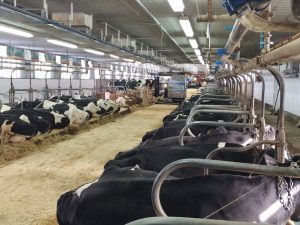
Ferme Giard is located in the Saint-Hyacinthe area of Quebec. The farm has 125 cows, with 250 head total on farm. Their average production per lactation is 11,850kg/cow. A tie-stall set-up, the farm installed the Roboléo robotic milker in October of 2013.
KEEWAYDIN – GEA

Les and Claire Pike, with their children Suzi and Dan Pike, own and operate Keewaydin Farm in Stowe, Vermont. Currently the farm is running 135 acres of haylage and milking 88 registered Jerseys, with the ability to grow up to 100. Average Production is 1730kg/day on the farm with 2 MIone robots installed in February of 2014.
- What was your biggest reason for switching to robots?
Mistyglen (DeLaval) – We had reached a plateau in our old tie stall system. To continue to grow, become more efficient and allow the cows to reach their potential, it would be necessary to make a dramatic change. Once we decided that we were going to build a new barn, robotics became our milking system of choice. Because Tom has two young daughters and his wife, Kris, is a full-time registered nurse, it allowed us greater flexibility in time management, while still giving us the opportunity to maximize production without increasing labour.
Lavender (Lely) – There were a few key reasons for our switch to robots. First, I hated milking cows in a parlor- our facilities were old and the timing was right to make the change. I also liked the flexibility offered by robots for time management and the extra milkings they provided.
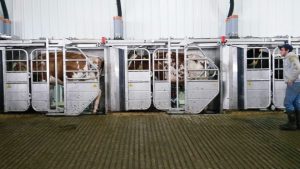
Bellman (GEA) – As dairy farmers, I think we undervalue the amount of manual labor we do in a day. We were looking to expand our herd while reducing the amount of hired and physical labor.
Pol Butte (Boumatic) – Cow comfort and more frequent milkings a day were 2 of the biggest deciding factors of why I made the change to robots. Physical set-backs and increased family time also helped make the decision.
Wrico (DeLaval) – My biggest motivation to choose robots was labour. It allowed me to expand and make room for my two sons. When touring dairy farms using the latest technology, it was very apparent that 100 + milking cow herds with robots could be family-run with no added labour. I like managing cows, not people.
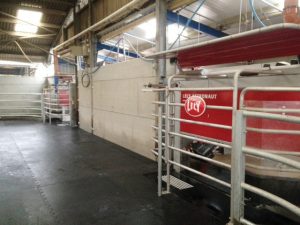
Bargreen (Lely) – Our biggest motivation was wanting to milk our cows 3x a day without having to worry about night staff letting us down!
Roosburg (GEA) – We are huge on family. The opportunity to go watch our kids play soccer and hockey and the ability to have dinner together was one motivation. Also, to give the cows free choice and the ability to be milked 3-4 times a day was another alluring factor.
Giard (Roboléo) – The biggest motivation for us was that the robot can let us do 3 milking a day and reduce labour.
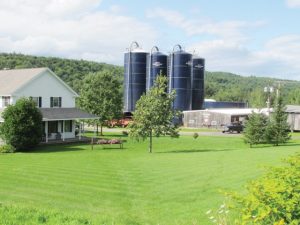
Keewaydin (GEA) – We wanted to stay in the dairy business, but the older generation could not physically continue to do the daily milking, the younger generation did not want to, and none of us wanted to get into the hassle of trying to find and keep good hired labor to milk the cows. We also wanted to be able to make the same amount of milk that we use to make with fewer animals.
- Why did you choose the company you did?
Mistyglen (DeLaval) – Monetarily, DeLaval was the easy choice. We had the option of purchasing a used model and having it refurbished to current specifications so that made it financially enticing. We also were very intrigued by all of the information and possible upgrades available on the VMS. We installed the Online Cell Counter, and like that the Herd Navigator is an option in the future. The adjustable stall size and ease with which you can manually milk cows in the robot if the need arises was also a significant selling point. Service is critical, and knowing that Norwell Dairy Systems is a stable company with a well-trained staff of technicians sealed the deal for us.
Lavender (Lely) – I find Lely to have a better machine and much more knowledgeable service crew.
Bellman (GEA) – We chose the GEA MIone for several reasons. After attachment, the MIone cleans, dips, stimulates and strips the teats, then continues to harvest milk. We also preferred the layout of all being in a line formation. Being able to milk special needs and fresh cows on manual mode was at the top of the list as well. Finally, we already had a good relationship with the local GEA dealership.
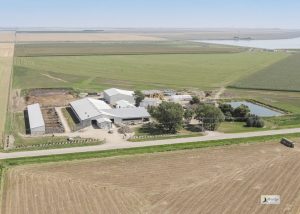
Pol Butte (Boumatic) – Chinook Dairy Service Ltd. has always treated me well, and the dealer is only 15 min away from my farm. We wanted the Boumatic robot because it attaches the cow from the rear. Also, cows can enter the robot from both sides and exit from both sides, which makes for really easy sorting.
Wrico (DeLaval) – I chose DeLaval because the service technician was 15 minutes away, rather than two hours for the Lely technician. Also I liked the way DeLaval prepped the cows the same way that I did – strip, wash and dry.
Bargreen (Lely) – We chose Lely for a few reasons- they’ve been making robots for a long time, we liked the walk through system supplied with the A4 model, and the back-up service as we have a couple of engineer’s living locally– service vans filled with spare parts!

Roosburg (GEA) – As soon as we saw our first GEA MIone robot and barn we knew that was what we wanted. It was the vision and objectives of the company that drew us. We liked the milk-first concept of the barn, the accessibility of the robot by visitors – the proximity of the robot to the front door and hallway, not to mention how close it is to the bulk tank, so less pipeline! The viewing area in the robot room and the commitment to improvement and good service were also draws. As well, we feel that this robot is superior to all others mainly due to attach time and milking prep. The concept of attaching one unit that can prep (wash, dry and pre-strip), milk and post-dip the cows is genius.
Giard (Roboléo) – First of all, Roboléo gave us the chance to have access to the robotic milking without any changes to the barn, which was a huge positive. Also, because it is a Quebec owned company, it gave us the chance for us to support a product that is made and developed in Quebec. Lastly, Roboléo is a robot that moves around the cows.
Keewaydin (GEA) – We went with the dealer that we had known for decades primarily, and we also got the best price from that dealer/company.
- What kind of setup did you have before? Did you rebuild or renovate?
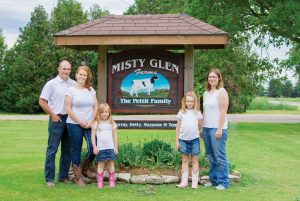
Mistyglen (DeLaval) – Prior to May 2012, we were in a 42 cow tie stall barn. Space was limited, production and cow comfort suffered due to the overcrowding. After much planning, we settled on a large enough free-stall barn for 67 stalls and a pack for dry cows and heifers. The barn is a 3 row free-stall with a single bar head rail in the main milking area. Despite the fact that our fetching percentage may be slightly higher than a controlled traffic system, we believe this is offset because free traffic allows for higher feed intake and increased productivity/cow. The old tie stall has been renovated into heifer pens, creating a better environment for animals at every stage of life. We were also able to switch to TMR feeding in the new barn, which has greatly benefited the herd.
Lavender (Lely) – We had a double 4 herringbone that was 30 years old, everything was in free-stalls. We renovated our old barn to put one of the robots in, took down 8 old barns and put up a new drive-thru on the top of the site to house another robot.
Bellman (GEA) – A few years ago we milked 60 cows in a tie-stall barn. In May of 2012 we built a steel structure free-stall barn, with intentions of putting in a milk parlor. Cows were moved to the free-stall barn in June of 2013, where they watched us build the robot addition. We completed and started milking with the robots in May 2014.
Pol Butte (Boumatic) – We had a drive through tie-stall barn with a track system and 8 units with automatic takeoffs. Renovations included changing the barn to a bedding pack and installing 2 Boumatic Robots.
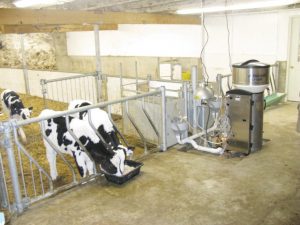
Wrico (DeLaval) – My former facility was a tie-stall barn that had served its purpose and required extensive upgrading. I built a new barn including runway slatted floor, 140 free-stalls, waterbeds, automated feed system, and automatic thermostat controlled curtains and ceiling fans – with two DeLaval VMS robots.
Bargreen (Lely) – We have 2 free-stall sheds of 172 stalls. We renovated by putting a 10ft lean-to extension on to our free-stall shed that now houses 3 robots.
Roosburg (GEA) – January 2013 saw the 90 cow tie-stall burn to the ground along with 130 head of cattle. The herd was high type and high production, with deep pedigrees. The decision to rebuild came quickly, and the switch to free-stall was an eventual certainty as the desire for robotics and exercise for the cows became priorities. We always want everyone who reads our story to know that God is faithful and nothing is possible without Him.
Giard (Roboléo) – No, as the cows are in the tie-stall, we didn’t have to do any modifications in the barn. This gave us the chance to save money.
Keewaydin (GEA) – We milked in a double 4 herringbone parlor that was originally built as a double 3 in 1974, expanded in 1987. We had automatic take-offs and weigh jars and milked 2X. We renovated a corner of our existing barn to house the robots.
- What were the biggest challenges when you switched over?
Mistyglen (DeLaval) – Change of mindset is one of the biggest hurdles to cross. Because everything is new, and you may not be completely confident with the equipment or the automation, it is easy to start to micromanage the robot to the point of insanity. An alarm isn’t the end of the world. You don’t need to fetch a cow the minute she goes over 12 hours since her last milking. You have to trust the technology and allow the system to regulate itself and allow for the cows to adjust in their own time. Coming from a tie-stall, our cows seemed to have a longer learning curve since they were dealing with a lot of changes at one time. Eventually, even the older cows began visiting on their own and adapted to their new environment.
Lavender (Lely) – Being one of the first robots installed in this area, getting nutrition and things like that done well was a challenge.
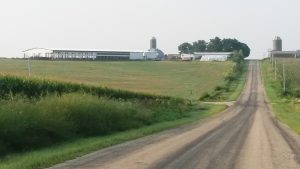
Bellman (GEA) – Our start up happened to be a very busy time on the farm, planting season. Since we did most of the construction work ourselves, we were constantly torn between fieldwork and the robotic installation and startup. Our family was already putting in long days for a good month before start up, and the local GEA dealership really helped with extra labour during start up week.
Pol Butte (Boumatic) – In the beginning we had lots of problems with sore feet because they came from a tie stall barn and were not used to walking. It was a big challenge trying to get the cows to move.
Wrico (DeLaval) – The biggest challenge when I switched over was a tie-stall herd of cows in a free-stall barn. Weak cows do well in tie-stalls because you feed, water and milk them right in their stall. When they have to do all that on their own, they sort themselves out pretty quickly. I never had a problem getting the cows to be milked by robots. I think they prefer it. I call our two robots Della and Daisy and they are the most patient, calm and consistent milkers I have ever seen – cows like that.

Bargreen (Lely) – Training your cows. 170 cows to train at one time is a fair challenge, but it’s worth it in the end.
Roosburg (GEA) – When we switched we had the challenges of a new herd, of training the cows to use the robot, of mycotoxins in our feed, of learning new routines, and new equipment. The toughest part was probably just adjusting to a free-stall.
Giard (Roboléo) – The biggest challenge was the transition between milking systems because it demanded an adaptation for both the cows and workers. The cows are required to as back up in the robot, as well as the adaptation for the workers to become comfortable with the new technology.
Keewaydin (GEA) – We had to lose our office, breeding pen, vet chute, and one maternity/sick cow pen to make room for the robotic installation. We were able to fully continue to use our parlor until the robot was ready to take over, but it was a challenge to find a place to put everything else until we could take out the old parlor and renovate that space.
- What is your outlook on the struggle with how to increase herd size slowly with robots?
Mistyglen (DeLaval) – We moved into the new barn with 42 cows. As I write this, we are milking 41, even though we have purchased quota every month since May 2012. So the production increases have out-gained our ability to buy quota. Although we allocated space for a second robot in our design, we have no plan or desire to grow beyond the capacity of a single VMS unit. Our ultimate goal is to milk 55-60 high-producing, healthy cows, and hopefully one day achieve a Master Breeder shield.

Lavender (Lely) – One day you have to have vision, suck it up, and buy another unit. We are currently underutilizing our units as far as cow numbers go – but the cows love the extra space and milking time so it isn’t an issue that we aren’t maxing out our facilities.
Bellman (GEA) – Optimistic! We think slow growth is smart growth. Scaling up can be challenging for anybody to calculate feed reserves, heifer housing, flux in markets, etc. We will look to the robot experts for smart solutions to expand.
Pol Butte (Boumatic) – We have room left on the robots to milk more cows but instead we are focusing on increasing the quality and production of our cows.
Wrico (DeLaval) – In Ontario the quota policy is under review and I hope that with turnover on the Board we will see a more progressive transfer policy. It is ironic that DFO sees the value and encourages the merging of milk transporters to gain efficiencies in milk transportation but will not allow neighbours to buy each other out and merge quota holdings into new more efficient facilities. With today’s technology one man can take care of more cows and our quota policy has not kept pace with the change.
Bargreen (Lely) – I don’t think it a struggle necessarily, just something that needs to be planned in advance if going to increase herd size. Like all things in life, it doesn’t just happen overnight.
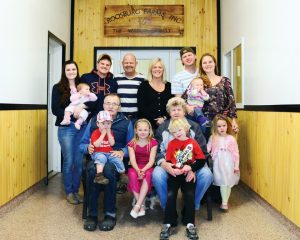
Roosburg (GEA) – Our ability to increase our herd size always depends on availability of quota, which is very low. So we are always increasing herd size at a very slow rate. If we were to ever lose the supply management system we feel comfortable knowing that we could increase our herd size quickly because of the MIone. Without having to buy another whole robot, we could add a milking box and increase by 50 or 60 cows immediately.
Giard (Roboléo) – With 3 milkings a day, Roboléo can milk between 55 to 60 cows per day. However, we need to take in consideration the increase of the production between 10% and 15% (by doing 3x per day) we will reach an results of 1.6 kg of fat by cow per day.
Keewaydin (GEA) – That is not a problem for us. Our land base is limited, so it is highly unlikely that we will ever have more cows than the 2 robots can handle.
- What advice would you give to someone looking at robots?
Mistyglen (DeLaval) – Robots are not for everyone. Robotics wasn’t at the top of the list for us initially, but after learning more about their benefits and touring other facilities, we were convinced that it would be the best option in our situation. It’s vitally important that you take all factors (feed costs, maintenance, labour savings, and increased production) into consideration when you’re making the decision to purchase a robot. Be aware of how certain design choices (i.e. sand bedding) can affect the robot function, warranty and wearing of parts. Listen to other people, visit as many farms of similar size and situation as possible, but choose the brand that best suits you and the company you are most comfortable with.

Lavender (Lely) – Buy Lely 🙂 Be patient- things start to improve after a few weeks, and will keep getting better for 2 years as cows calve in again and are on the program.
Bellman (GEA) – Visit as many robotic farms as you can, and ask questions. In addition, find a robot farm that is similar to yours in size, family, and farming style. Network with robot farmers.
Pol Butte (Boumatic) – Do your research on different robots and barn design’s to see what suits best for you.
Wrico (DeLaval) – My advice to someone considering robots is to visit as many robotic facilities as you can. This is a fast evolving technology. I have been in my facility for four and a half years now and the changes in the approach are considerable. In fact I have already modified my system three times, from a feed first to milk first to milk first no holding area.
Bargreen (Lely) – Don’t think it will change your life over night, however it will do in time. Look at all options and models available and always remember back up service goes along way! Finally, visit farms that have Robots rather than looking at new builds if that’s not what you’re doing. If it’s an add-on to old sheds look at farms that have done this so you can learn from their mistakes!!!
Roosburg (GEA) – Get into a barn that has a MIone robot and get ready to spend the day watching it and learning from a field-tech, sales rep, or the farmer. Also, don’t expect to install robots and forget about your cows. You need to be a better cow person when you have robots because you have less daily contact with the cows.
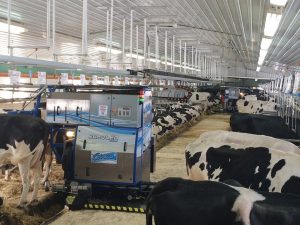
Giard (Roboléo) – Take the time to go visit some other producers who already have a robot and do some personal evaluation about the farm situation.
Keewaydin (GEA) – Go wherever you have to go to see the brands that you are interested in working with. Talk to the farmers that are using them, find out what the chemical, utility, and maintenance costs are. Go with the dealer that you trust.
- How has your management style changed?
Mistyglen (DeLaval) – There is infinitely more information available for decision making. Data collected can give you a head start on potential problems, but you still have to be attentive to the animals themselves. The number of hours of labour is similar, but the work being done is much different. If you’re buying a robot to ignore it, you’re not doing yourself or the cattle any favours. But when managed properly, it can free up personal time.
Lavender (Lely) – With robots, you farm by exception. If a cow is not on a list, you don’t notice her- the best cows are never noticed.
Bellman (GEA) – We still get up early, scoop the poop, mix the TMR, and feed calves. But we work at a much more relaxed pace and enjoy life. We like the idea of working smarter not harder.
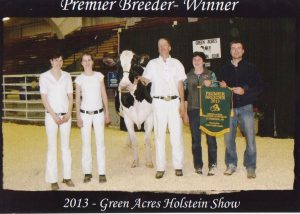
Pol Butte (Boumatic) – It’s more of a supervising role – managing instead of physically working. You’re also not tied down to do chores at set times.
Wrico (DeLaval) – My management style has changed to a daily checklist. In the tie-stall barn you did an individual assessment of each cow as you milked them morning and night. In the robot barn the cows are on their own schedule and you need to check reports on your computer to assess performance, heats etc. You still spend a lot of time in the barn- but it is different time spent, more management focused.
Bargreen (Lely) – I get to spend more time with cows that need my attention rather than putting units on 99% of the herd in a parlour that don’t need it. Also the robot information you can use is very helpful as an aid, e.g. on Lely A4’s cows are weighed, rumination activity, heat time activity, conductivity of milk and temperature taken every time the cow gets milked.
Roosburg (GEA) – Our management style has changed drastically due to our switch from a tie-stall, and there were many bumps in the road, but we are beginning to rely on our robot more, and some days we are able to leave the barn and even spend some time camping with the whole family because of the robot. Our management style now includes a lot more technology and we are still learning every day.
Giard (Roboléo) – With the robots, we have more time to do other jobs around the farm.
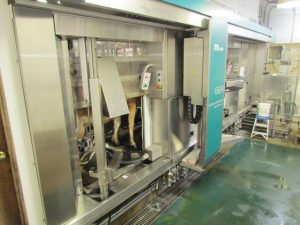
Keewaydin (GEA) – We spend more time looking at the reports that are available to us now via the robotics and activity monitoring that we did not have before. It is much easier for 2 people to handle all the chores when the other 2 are busy in the fields, and we are all able to take a bit more time off.
- In your experience, what has been the biggest positive outcome in the switch that doesn’t seem to get hi-lighted?
Mistyglen (DeLaval) – For us, the biggest positive has been the number of people the new facility has allowed us to meet. We have had more visitors from around the world in the last 2 and a half years than we ever had in the previous tie stall facility. This has helped us emerge from obscurity, which has had positive effects on cattle marketing. We have also been given the opportunity to host several tours aimed at the general public to give them a better idea of how a modern dairy farm operates. Prior to construction, we started a Facebook page to document the build and transition to robotic milking and through social media we have answered many questions from other perspective robot farmers, or those who are just curious about what we have done. All of that has been an added benefit of the robot and very satisfying.
Lavender (Lely) – It is amazing how much more relaxed the cows are. Instead of being forced to stand around in the holding pen and go into the parlour, it is their time and in their way. This combination equals more production from healthier cows. Overall it is better for the cows than for me– and it is great for me.
Bellman (GEA) – I feel our family has become better dairy farmers. Researching better fly control, footbaths, learning cow signals and cow philosophy. It’s like we have a renewed love of dairy farming.
Pol Butte (Boumatic) – Production and reproduction. Our average production is 41 kg with a 3.8 % butterfat. In the tie stall barn I had a tough time getting cows pregnant. Since we switched to robotic milking with the heat detection system our pregnancy rate has gone up significantly, as well we have noticed a significant decrease in fertility drug use.

Wrico (DeLaval) – The biggest positive of the switch has been the lifestyle change. We live in a more urban society now and that does not fit well with a dairy cow’s schedule. Robots allow you to dairy farm on your schedule and dairy farming is just so much more physically easier now. It was a real revelation to be able to sit down at night to watch a hockey game and not fall asleep during the first commercial!
Bargreen (Lely) – Happy and healthier cows, reduction in lameness by 70%.
Roosburg (GEA) – One thing that seems to get a bit overlooked is that it is still possible to include a section for show cows. Despite being a free-stall robotic farm, we are still committed to genetics and deep pedigreed cows.
Giard (Roboléo) – The biggest positive for us is the increase of the production with less labour.
Keewaydin (GEA) – The benefit to the cows. Jerseys are probably the most difficult breed of cows to milk, and we have found that they would much rather be milked by a robot than by people. We had calm cows before the switch, but they are even calmer now. It is nice for them to never have to be rounded into a holding area in a group to be milked.
Though the machine may be different from farm to farm, the key messages seem to prevail. Increased production with decreased hired labour is any manager’s dream. The idea of ‘working smarter, not harder’ rises in each interview, as productivity is seen to increase when hours are spent managing rather than hanging machines. And finally, it is great for the cows – working around their own clock and making more milk because of it.
